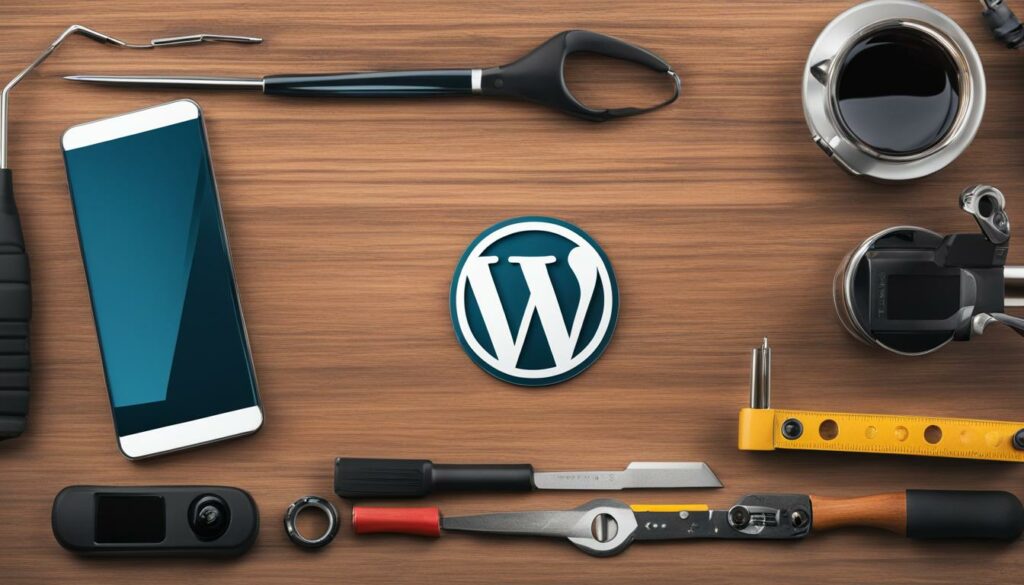Welcome to our comprehensive guide on hosting and the Internet of Things (IoT). In today’s interconnected world, IoT has become an integral part of our daily lives, transforming the way we live, work, and interact with technology. From smart homes to industrial automation, IoT enables devices to communicate, share data, and perform tasks without human intervention. In this guide, we will explore the fundamentals of IoT, its benefits and challenges, and its impact on various industries. But first, let’s understand what exactly IoT is and how it works.
Key Takeaways:
- IoT is a network of interrelated devices that connect and exchange data with each other and the cloud.
- IoT devices are embedded with technology like sensors and software, enabling them to collect, send, and act on data.
- IoT offers several advantages, such as improved efficiency, cost savings, and enhanced decision-making.
- However, there are also challenges to consider, including security risks and compatibility issues.
- IoT has applications in various industries, such as healthcare, manufacturing, and retail, and is driving innovation and competitiveness.
What is the Internet of Things (IoT)?
The Internet of Things (IoT) is a network of interrelated devices that connect and exchange data with other IoT devices and the cloud. IoT devices are equipped with embedded technology such as sensors and software, enabling them to interact with their environment and share information.
In the IoT, devices can include not only digital machines and objects, but also mechanical systems, making it a versatile network that extends beyond traditional computing devices. Through this network, data can be transferred seamlessly over a network without the need for human interaction.
IoT devices collect data from their surroundings using sensors and embedded systems, such as processors and communication hardware, and then act upon that data. They play a crucial role in capturing and sharing the sensor data, which is essential for IoT applications.
To facilitate the exchange of data, IoT devices connect to an IoT gateway, which serves as a central hub for data transmission and management. This gateway enables efficient communication between devices and ensures that the collected data reaches its intended destination.
Furthermore, IoT devices have the capability to analyze and process data locally, at the edge device, before transmitting it to the cloud. This local processing reduces bandwidth consumption and enables real-time decision-making at the device level.
Overall, the Internet of Things revolutionizes the way devices interact and share information. It enables a network of interconnected devices to collaborate and exchange data, leading to improved efficiency, enhanced customer service, and greater value for businesses across various industries.
Key Features of the Internet of Things (IoT)
- Network of interrelated devices
- Exchange of data with other IoT devices and the cloud
- Embedded technology such as sensors and software
- Capability to collect, send, and act on data
- Connection to an IoT gateway for data transmission
- Local data analysis at the edge device
Benefits of the Internet of Things (IoT)
“The Internet of Things has the potential to improve efficiency, enhance customer service, and increase the value of businesses.” – Industry Expert
As the IoT facilitates seamless communication and data transfer, it offers several advantages to both individuals and organizations. Some key benefits include:
- Improved efficiency: IoT enables automation and optimization of various processes, reducing manual intervention and increasing operational efficiency.
- Enhanced customer service: With IoT, businesses can provide personalized experiences, real-time monitoring, and quicker responses to customer needs.
- Increased value: IoT opens up new opportunities for innovation, allowing businesses to create value-added products and services.
By leveraging the power of the Internet of Things, organizations can gain a competitive edge, streamline operations, and unlock new possibilities for growth and success.
| Advantages of IoT | Disadvantages of IoT |
|---|---|
| Access to real-time information | Increased security risks |
| Improved communication between devices | Compatibility issues between devices |
| Efficient data collection and analysis | Potential system bugs and device malfunctions |
| Automation of tasks |
How does IoT work?
An IoT ecosystem consists of web-enabled smart devices that use embedded systems, such as processors, sensors, and communication hardware, to collect, send, and act on data acquired from their environments. These devices communicate with each other and can also interact with humans. The connectivity, networking, and communication protocols used in IoT depend on the specific applications deployed. IoT can utilize artificial intelligence and machine learning to facilitate data collection and analysis processes.
An IoT system collects data from sensors installed in IoT devices and transfers that data through an IoT gateway for analysis by an application or back-end system. The utilization of AI and machine learning in IoT enables more dynamic and efficient data analysis. By utilizing IoT, businesses and organizations can automate processes, reduce labor costs, cut down on waste, and improve service delivery. IoT helps make manufacturing and product delivery less expensive, while also providing transparency into customer transactions and improving decision-making processes.
Benefits of IoT Ecosystem
- Automation of processes
- Reduced labor costs
- Efficient service delivery
- Improved decision-making
- Cost savings in manufacturing and product delivery
- Transparency in customer transactions
“IoT enables businesses and organizations to automate processes, reduce labor costs, cut down on waste, and improve service delivery.”
By incorporating AI and machine learning, IoT systems can analyze large amounts of data in real-time, allowing businesses to make more informed decisions. Through automation, IoT enables organizations to streamline workflows, optimize resource utilization, and gain a competitive edge. Furthermore, IoT fosters innovation and drives technological advancements across industries, improving overall efficiency and customer satisfaction.

| Advantages | Disadvantages |
|---|---|
|
|
Why is IoT important?
IoT is revolutionizing the way we live and work, bringing about a new era of connectivity and efficiency. With the integration of smart devices embedded with IoT technology, we can experience the benefits of automation and personalization in our daily lives. Take, for example, a smart home system that adjusts lighting, temperature, and security settings based on your individual preferences. This level of convenience is just the tip of the iceberg when it comes to the potential of IoT for consumers.
But the importance of IoT extends far beyond the realm of personal convenience. Businesses and organizations are recognizing the value that IoT brings to their operations, enabling them to gain real-time insights into their processes and optimize their performance. From improving customer experiences to optimizing supply chain and logistics operations, IoT is a game-changer for businesses in all industries.
By leveraging IoT technology, companies can automate tedious tasks, reduce labor costs, and improve overall efficiency. With access to real-time data and insights, businesses can make better-informed decisions to drive growth and maintain a competitive advantage. The value of IoT lies in its ability to enhance customer service, streamline operations, and create new opportunities for innovation.
Furthermore, IoT has applications across various sectors, including healthcare, finance, retail, and manufacturing. It enables the integration of systems and processes, improving collaboration and communication between different stakeholders. As businesses continue to adopt IoT solutions, they will unlock new avenues for growth and stay ahead of the curve in the digital landscape.
Benefits of IoT:
- Improved efficiency: Automate tasks and streamline operations.
- Enhanced customer service: Personalize experiences for customers.
- Better decision-making: Access real-time insights for informed choices.
- Competitive advantage: Stay ahead in the digital age.
IoT empowers businesses and individuals with the ability to live and work smarter. Its potential to drive innovation, increase efficiency, and create new business opportunities cannot be underestimated. Embracing IoT technology is crucial for businesses looking to thrive in the digital era.

| Benefits of IoT | Examples |
|---|---|
| Improved efficiency | – Automated inventory management – Optimized energy consumption – Predictive maintenance |
| Enhanced customer service | – Personalized recommendations – Real-time support and assistance – Seamless integration of services |
| Better decision-making | – Data-driven insights and analytics – Real-time monitoring and reporting – Predictive modeling |
| Competitive advantage | – Differentiation through innovative products and services – Improved operational efficiency – Ability to adapt to changing market demands |
By harnessing the power of IoT, businesses can unlock new levels of efficiency, customer satisfaction, and competitive advantage. The possibilities are endless, and the benefits are tangible. Embrace IoT and stay ahead in the ever-evolving digital landscape.
Please maintain a logical flow throughout the section, and ensure that the provided information is presented accurately and effectively.
What are the benefits of IoT to organizations?
IoT offers numerous benefits to organizations across different industries. By harnessing the power of IoT, businesses can unlock a range of advantages, including improved customer experience, time and cost savings, enhanced productivity, better decision-making, and increased revenue.
Monitoring Overall Business Processes
With IoT, organizations can gain real-time insights into their systems and operations. By monitoring key metrics and data, businesses can make data-driven decisions, optimize their processes, and identify areas for improvement.
Improved Customer Experience
IoT enables businesses to provide personalized and seamless experiences to their customers. By leveraging IoT devices and data, organizations can deliver tailored products and services, track customer preferences, and enhance satisfaction levels.
Saving Time and Money
Through automation and smart systems, IoT helps organizations save time and reduce costs. By automating routine tasks and streamlining operations, businesses can increase efficiency, minimize errors, and allocate resources more effectively.
Enhanced Productivity
IoT empowers employees by automating repetitive tasks and providing real-time data and insights. This allows employees to focus on high-value activities, leading to increased productivity and output.
Better Decision-Making
With access to real-time and accurate data, organizations can make more informed and strategic decisions. By analyzing IoT-generated insights, businesses can optimize their strategies, identify trends, and stay ahead of competitors.
| Benefits of IoT to Organizations | Description |
|---|---|
| Improved Customer Experience | Personalized and seamless experiences drive customer satisfaction and loyalty. |
| Cost and Time Savings | Automation and streamlined processes result in reduced expenses and increased efficiency. |
| Enhanced Productivity | Empowering employees with IoT technologies leads to higher productivity levels. |
| Better Decision-Making | Real-time data enables data-driven and informed decision-making processes. |
| Increased Revenue | Efficiency gains, improved customer experiences, and optimized strategies contribute to revenue growth. |
Increased Revenue
By leveraging IoT technologies, organizations can create new revenue streams and uncover untapped opportunities. Whether through innovative products, value-added services, or improved customer experiences, IoT can drive financial growth for businesses.
In summary, the benefits of IoT to organizations are extensive, ranging from improved customer experiences and cost savings to enhanced productivity, better decision-making, and increased revenue. By embracing IoT, businesses can position themselves for success in today’s interconnected world.
What are the Pros and Cons of IoT?
IoT, or the Internet of Things, offers numerous advantages to individuals and organizations alike. It provides access to information from anywhere, at any time, on any device. This means that you can stay connected to your IoT devices and receive real-time updates on their status or control them remotely. Whether you’re monitoring your home security system or checking the inventory of a smart vending machine, IoT enables seamless access to information.
Another significant advantage of IoT is improved communication between connected devices. IoT allows devices to communicate and share data with each other, enabling a more integrated and interconnected experience. For example, a smart home system can communicate with your smartphone to adjust temperature settings automatically when you’re on your way home.
Data collection is another key benefit of IoT. With IoT devices, you can collect and analyze large amounts of data in real-time. This data can provide valuable insights into various aspects of your life or business operations. From tracking customer preferences to optimizing manufacturing processes, IoT enables data-driven decision-making.
Automation is another significant advantage of IoT. IoT devices can automate various tasks, saving time and effort. For instance, smart thermostats can learn your temperature preferences and adjust them automatically, eliminating the need for manual adjustments.
In healthcare, IoT has the potential to revolutionize patient care. Connected devices can monitor vital signs, track medication adherence, and transmit data to healthcare providers. This enables remote monitoring and early detection of health issues, improving patient outcomes and reducing healthcare costs.
While IoT offers numerous advantages, it’s crucial to consider the disadvantages and security risks involved. Increased connectivity can lead to higher security risks, such as cyberattacks and data breaches. Managing a large number of IoT devices can also be challenging, especially when they come from different manufacturers with compatibility issues. System bugs can also cause device malfunctions and compromise the functionality of other connected devices.
Despite these challenges, the benefits of IoT outweigh the drawbacks. Continued advancements in IoT technology and the implementation of robust security measures will address and mitigate these risks. It’s essential to be aware of the potential security risks and take the necessary precautions to protect your IoT devices and data.
In conclusion, IoT offers numerous advantages, including seamless access to information, improved communication between devices, efficient data collection, automation, and enhanced healthcare services. However, it’s crucial to be mindful of the security risks and challenges associated with IoT. By understanding and addressing these concerns, individuals and organizations can fully leverage the potential of IoT and enjoy the benefits it brings.

Conclusion
The Internet of Things (IoT) is a transformative technology that has already revolutionized various industries and is set to continue its rapid growth. IoT brings a host of benefits to organizations, ranging from improved operational efficiency and enhanced customer experiences to cost savings and better decision-making. Despite a few challenges and potential drawbacks, the advantages of IoT far outweigh the disadvantages.
IoT holds the potential to drive financial growth and stability by enabling businesses to streamline operations, optimize resource utilization, and unlock new opportunities for innovation. As IoT advances, it is crucial for businesses and individuals to adapt and fully embrace the potential of this technology in order to remain competitive in our fast-paced, interconnected world. Understanding the fundamentals of IoT, its wide-ranging applications, and the benefits it offers is key to leveraging this cutting-edge technology for success and economic growth.
The continuous advancement of IoT will shape the future of industries, drive technological progress, and open doors to previously untapped opportunities. By embracing IoT, organizations can make significant strides towards financial growth, improve stability, and stay at the forefront of technological advancements. From improving operational efficiency to creating personalized experiences for customers, IoT has the ability to transform businesses across the globe.
In conclusion, the Internet of Things revolutionizes the way we live and work, providing endless possibilities for innovation and growth. Embracing IoT is no longer an option but a necessity for organizations looking to capitalize on the immense potential it offers. As IoT continues to evolve, those who seize the opportunities it brings will thrive in a digitally connected world.
FAQ
Q: What is the Internet of Things (IoT)?
A: The Internet of Things (IoT) is a network of interrelated devices that connect and exchange data with other IoT devices and the cloud. IoT devices are embedded with technology such as sensors and software, enabling them to collect and share data.
Q: How does IoT work?
A: IoT consists of web-enabled smart devices that use embedded systems to collect, send, and act on data. These devices communicate with each other and can also interact with humans. IoT utilizes communication protocols and may incorporate artificial intelligence and machine learning.
Q: Why is IoT important?
A: IoT enables people to live and work smarter by automating tasks, improving customer service, and optimizing business processes. It provides real-time insight, enhances decision-making, and drives innovation and competitiveness in various industries.
Q: What are the benefits of IoT to organizations?
A: IoT offers several benefits to organizations, including improved customer experiences, time and cost savings, enhanced productivity, better decision-making, and increased revenue.
Q: What are the pros and cons of IoT?
A: IoT provides advantages such as access to information, efficient communication, automation, healthcare improvements, and convenience. However, it also carries security risks and compatibility issues between devices from different manufacturers.
Q: Conclusion
A: IoT is a transformative technology that offers significant potential for financial growth and stability. By embracing IoT and leveraging its benefits, businesses can streamline operations, optimize resource utilization, and unlock new opportunities for innovation.












